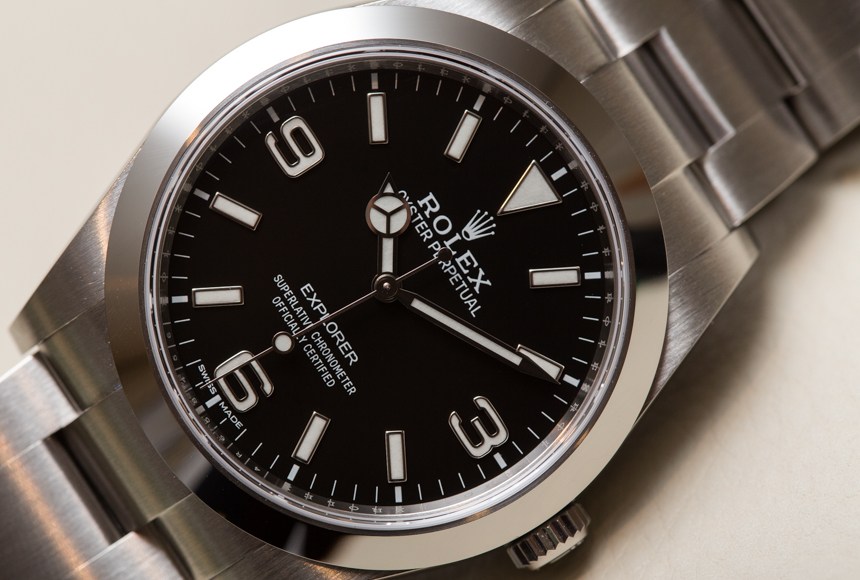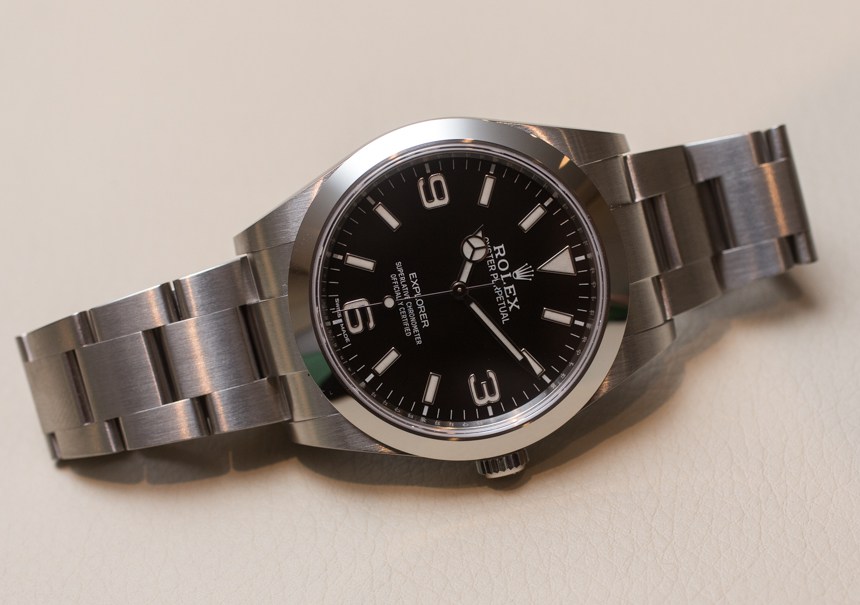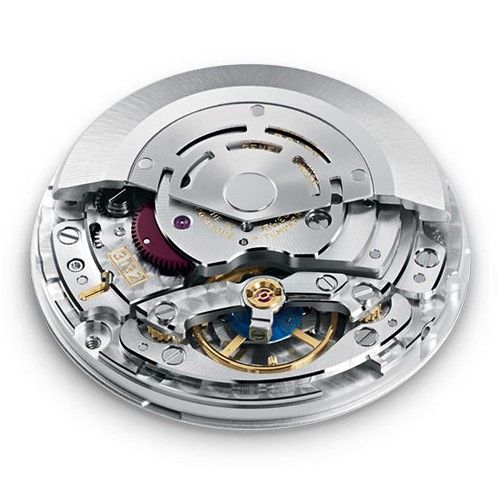Notes: Crown: Screw Down; Bezel: Stainless Steel; Movement: Automatic; Case Back: Solid; Material: Stainless Steel; Case Size: 39 mm; Case Type: Super-Case; Case Shape: Round.
When the Explorer 214270 was first unveiled, it was presented in a larger case than its forerunner — increasing its size from 36mm to 39mm. The 904L stainless steel Oyster case of the new 2016 Explorer maintains the 39mm size. Other parallels include the waterproofness to 100m (330 feet), the stainless steel three-link Oyster bracelet with the Oysterclasp and Easylink system, and the clean and sporty black dial.
When the Explorer 214270 was first unveiled, it was presented in a larger case than its forerunner — increasing its size from 36mm to 39mm. The 904L stainless steel Oyster case of the new 2016 Explorer maintains the 39mm size. Other parallels include the waterproofness to 100m (330 feet), the stainless steel three-link Oyster bracelet with the Oysterclasp and Easylink system, and the clean and sporty black dial.
Mechanism: Calibre 3132 is a self-winding mechanical movement entirely developed and manufactured by Rolex. It features a Parachrom hairspring and Paraflex shock absorbers, offering greater resistance to shocks and to extreme conditions. Like all Rolex Perpetual movements, the 3132 is a certified Swiss chronometer, a designation reserved for high-precision watches that have successfully passed the Swiss Official Chronometer Testing Institute (COSC) tests. Its architecture, in common with all Oyster watch movements, makes it singularly reliable.
Family Notes: Rolex presented the first very Explorer in 1953 to commemorate Sir Edmund Hillary and Tenzing Norgay’s pioneering climb to the 8,848-meter summit of Mount Everest, the earth’s highest mountain. Over 60 years later, the Explorer still remains a very popular choice among Rolex’s collection of sports watches.
The Explorer was based on the already existing and sturdy Bubbleback series of watches, which has been modified by Rolex for its more audacious clients. In 1952, the references 6098 and 6150 (both using the A296 movement) were in fact the first prototype watches to be used by climbers; they were watches with white dials and leaf shaped hands, which didn’t bear the name Explorer yet. In 1953, these models became the references 6298 and 6350, when they were fitted with the typical Explorer-type 3-6-9 dial and later with the Mercedes hands. Before Hillary and Norgay climbed the Everest, Rolex didn’t name their watches Explorer. Although Rolex registered the Explorer trademark on January of 1953, the Explorer gained its name after Hillary and Norgay climbed up the Everest and “Explorer” began to be added on the Ref. 6350, at the end of 1953.
The Explorer was based on the already existing and sturdy Bubbleback series of watches, which has been modified by Rolex for its more audacious clients. In 1952, the references 6098 and 6150 (both using the A296 movement) were in fact the first prototype watches to be used by climbers; they were watches with white dials and leaf shaped hands, which didn’t bear the name Explorer yet. In 1953, these models became the references 6298 and 6350, when they were fitted with the typical Explorer-type 3-6-9 dial and later with the Mercedes hands. Before Hillary and Norgay climbed the Everest, Rolex didn’t name their watches Explorer. Although Rolex registered the Explorer trademark on January of 1953, the Explorer gained its name after Hillary and Norgay climbed up the Everest and “Explorer” began to be added on the Ref. 6350, at the end of 1953.
Item created by: gdm on 2018-10-01 09:11:52. Last edited by gdm on 2018-10-01 09:17:22
If you see errors or missing data in this entry, please feel free to log in and edit it. Anyone with a Gmail account can log in instantly.
If you see errors or missing data in this entry, please feel free to log in and edit it. Anyone with a Gmail account can log in instantly.




